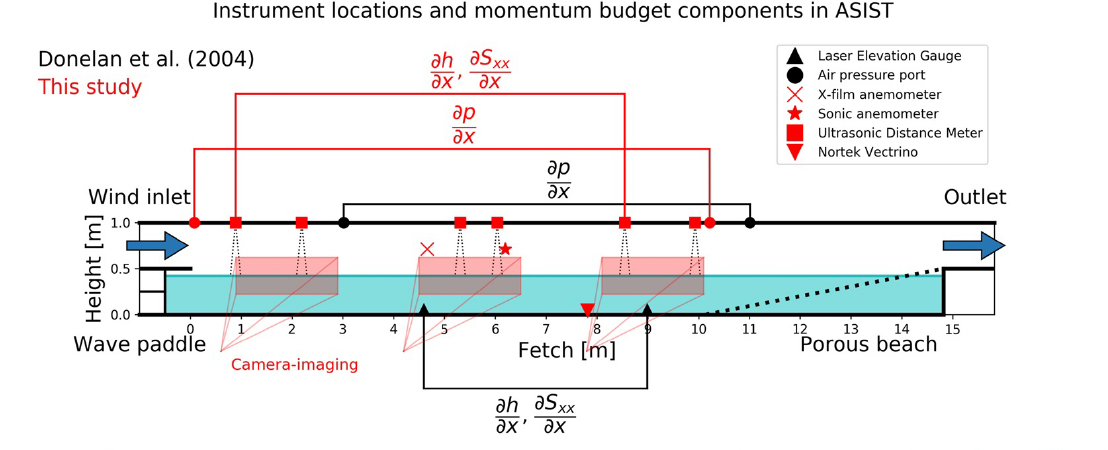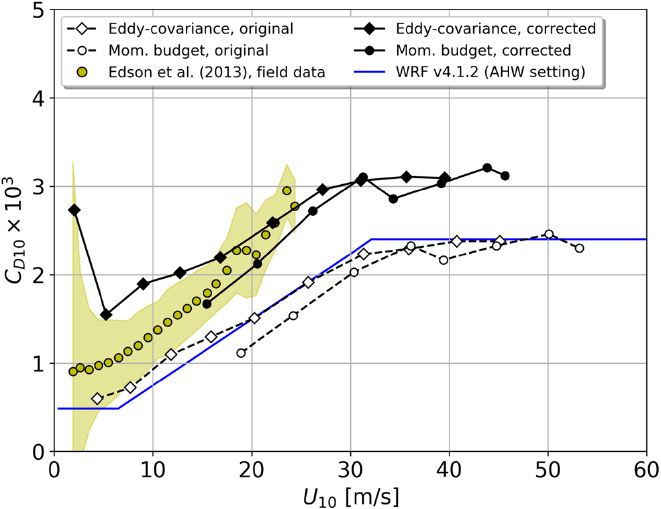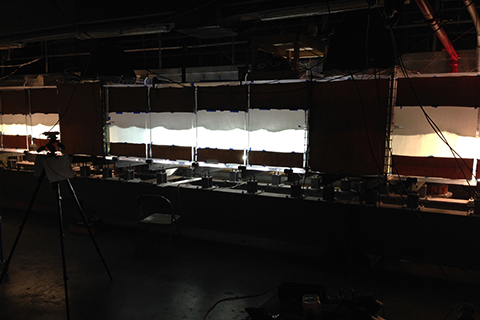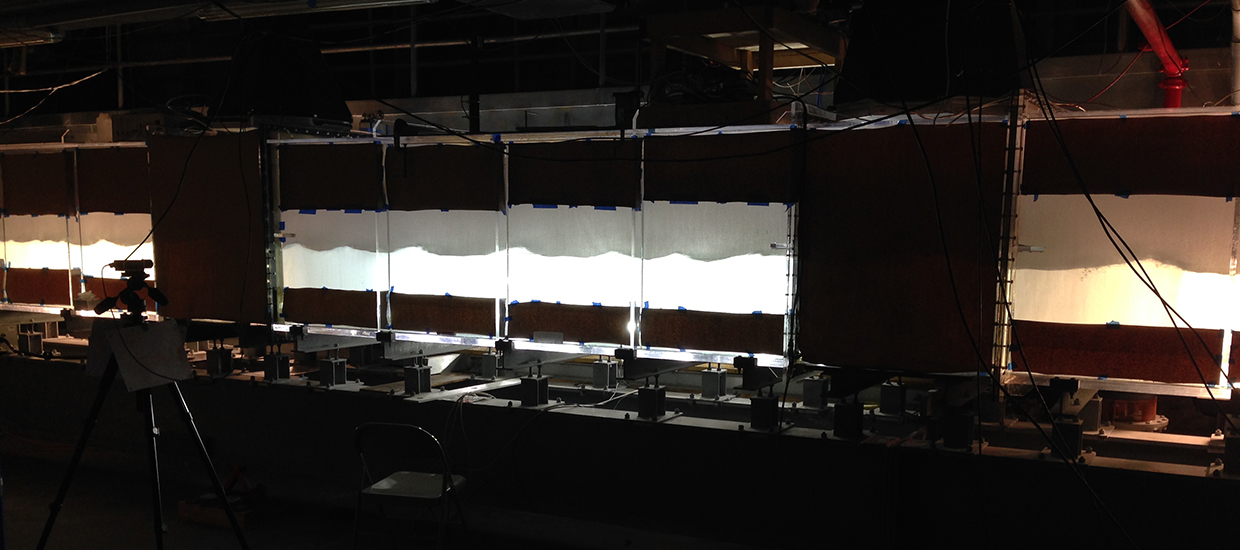Rapid intensification of hurricanes as they approach landfall can pose a significant risk to coastal communities because of the shortened time windows available for response planning. The intensification rate and magnitude are not well predicted by existing operational hurricane forecast models. A likely reason for this is that all such models rely on parameterizations for air-sea momentum and enthalpy transfer rates that have not been verified in extreme wind conditions. To address this fundamental gap, we propose to conduct a series of laboratory and numerical experiments to quantify the rate of air-sea momentum transfer in extreme wind conditions. This data will then be used to develop and test new parameterizations for the momentum transfer in hurricanes.
The project will be carried out in three stages: First, the rate of air-sea momentum transfer will be measured in winds up to 60 m s-1 using the eddy covariance method, and up to 90 m s-1 using a bulk momentum budget method, both established in the existing literature. Second, the main hypotheses of drag saturation in high winds will be tested by analyzing the relationships between air-sea momentum flux and wind speed, wave spectrum, whitecap and streak coverage, and wind-wave alignment. Finally, the newly observed relationships will be used to formulate a comprehensive wind input source function for use in next-generation coupled atmosphere-wave-ocean prediction models. The source function will be implemented in coupled model simulations of realistic major hurricanes, and evaluated against a comprehensive set of in situ measurements.
In the first round of measurement se measured the rate of air-sea momentum transfer (surface drag) in strong winds in a 15-m-long wind-wave tank. In support of previous work, we find further evidence that the drag saturates (levels off) in hurricane force winds, based on three different measurement methods. The level of drag saturation, however, is higher than previously thought. The leading study that discovered the drag saturation in high winds had an error in the source code used for the analysis of the data. This error resulted in an overestimate of 10-m wind speed and an underestimate of the drag coefficient. This finding is important because previous laboratory data that underestimate the drag were used to implement surface flux parameterization in the most widely used research and operational weather prediction model for tropical cyclone applications.
 (Top) (Curcic et al., 2020) Laboratory setup and locations of instruments in the tank from Donelan et al. (2004) (black) and this study (red). Connecting lines indicate the instrument positions used to compute pressure, elevation, and radiation stress gradients.
(Top) (Curcic et al., 2020) Laboratory setup and locations of instruments in the tank from Donelan et al. (2004) (black) and this study (red). Connecting lines indicate the instrument positions used to compute pressure, elevation, and radiation stress gradients.
Related publication:

Original (black, dashed) and corrected (black, solid) drag coefficient data by Donelan et al. (2004). Field data (mean ±1 standard deviation) from Edson et al. (2013) are shown in yellow. Surface drag parameterization in WRF (Advanced Hurricane WRF setting) is shown in blue.
Curcic, M., & Haus, B. K. (2020). Revised estimates of ocean surface drag in strong winds. Geophysical Research Letters, 47, e2020GL087647. https://doi.org/10.1029/2020GL087647





 (Top) (Curcic et al., 2020) Laboratory setup and locations of instruments in the tank from Donelan et al. (2004) (black) and this study (red). Connecting lines indicate the instrument positions used to compute pressure, elevation, and radiation stress gradients.
(Top) (Curcic et al., 2020) Laboratory setup and locations of instruments in the tank from Donelan et al. (2004) (black) and this study (red). Connecting lines indicate the instrument positions used to compute pressure, elevation, and radiation stress gradients. 
